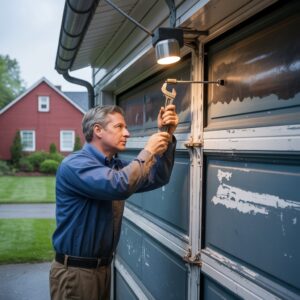
Scaffolding has come a long way from the rudimentary structures of wood and rope used centuries ago. Today, modern construction demands safe, efficient, and adaptable access solutions. At the forefront of this evolution stands the Haki Tower — a revolutionary modular scaffolding system that has reshaped the industry standard for temporary works platforms. This article explores the journey of the Haki Tower, its technological innovations, and the reasons why it’s considered a true game-changer in scaffolding.
A Brief History of Scaffolding Innovation
Scaffolding is as old as construction itself. From ancient Egypt to modern skyscrapers, the need for temporary platforms to allow work at height has always existed. Traditional tube-and-coupler scaffolding dominated the 20th century, offering flexibility but requiring extensive labour, time, and skill to assemble.
By the late 1900s, modular scaffolding systems began gaining popularity for their speed, strength, and ease of use. Among these innovations, Swedish engineering firm HAKI introduced a series of systems that would later culminate in the modern Haki Tower — a product designed to meet the evolving demands of construction safety and efficiency.
What is the Haki Tower?
The Haki Tower is a modular access tower system, primarily used in construction, industrial maintenance, and infrastructure projects. Built using the HAKI Universal system, it offers unmatched flexibility in creating stair towers, lift shafts, birdcages, and mobile access platforms. What sets the Haki Tower apart is its engineered design that ensures quick assembly, robust structural integrity, and maximum safety.
The Haki Tower is not just another scaffolding system; it’s a precision-built, standardized solution that eliminates many of the risks and inefficiencies associated with traditional scaffold builds. Whether on urban high-rises or complex infrastructure, this tower system offers a consistent and safe method for vertical access.
The Engineering Behind the Evolution
The design of the Haki Tower focuses on three essential pillars: safety, speed, and strength. Its components are manufactured to exacting standards, allowing for rapid assembly without compromising on stability.
One of the standout features of the Haki Tower is its unique guardrail system, which ensures that safety barriers are installed from below. This “advance guardrail” approach significantly reduces fall risks during erection and dismantling, complying with Work at Height Regulations and improving onsite safety protocols.
Additionally, the tower’s modular nature means that components can be reused and reconfigured for different projects. This reduces material waste and makes the system more environmentally sustainable — a key consideration in modern construction.
Versatility Across Projects
Another defining strength of the Haki Tower is its adaptability. It can be used across various industries, including construction, rail, utilities, and energy. Whether it’s providing access to hard-to-reach areas on a refurbishment project or acting as a temporary staircase on a bridge repair, the Haki Tower delivers high-performance solutions for different site challenges.
Because of its compatibility with other HAKI systems, such as HAKI Universal and HAKI Bridge System (HBS), it integrates seamlessly with broader access and protection frameworks. This versatility reduces the need for multiple systems onsite, streamlining operations and reducing logistical complexities.
Improved Safety Standards
In an industry where worker safety is paramount, the Haki Tower has raised the bar. The system’s advanced safety features include non-slip decking, high-strength steel frames, and the aforementioned advance guardrail installation method. These enhancements reduce the risk of slips, falls, and structural failure — common hazards in conventional scaffolding systems.
Moreover, the tower has undergone rigorous testing and meets multiple international safety standards, including BS EN 12810 and 12811. These certifications provide peace of mind for contractors and project managers who prioritise compliance and reliability.
Faster Assembly Equals Reduced Labour Costs
Speed of assembly is another critical factor that makes the Haki Tower a game-changer. Time is money on construction sites, and the quicker a scaffold can be erected, the more cost-efficient the project becomes.
Haki’s intuitive design allows for fewer components and faster build times compared to traditional tube-and-fitting scaffolding. In many cases, crews report assembly times up to 50% faster, which significantly reduces labour costs and project delays.
This efficiency is particularly valuable in emergency or time-sensitive projects, such as infrastructure repairs or shutdown work in industrial environments, where rapid deployment is essential.
Environmental Benefits
Modern construction is increasingly focused on sustainability. The Haki Tower supports this shift by using durable, reusable materials that offer a long life cycle. With fewer components needed and less material waste generated, the environmental impact of using a Haki Tower is substantially lower than many alternatives.
Additionally, the system’s design reduces the need for transportation space, meaning fewer lorry loads and a smaller carbon footprint. These factors make it a preferred choice for companies looking to meet their environmental and Corporate Social Responsibility (CSR) goals.
A Trusted Solution Worldwide
The Haki Tower is not just popular in the UK and Europe — it has gained global recognition for its reliability and performance. Contractors across North America, Asia, and the Middle East have integrated Haki Towers into their projects, citing benefits such as reduced build time, improved safety, and lower lifecycle costs.
Case studies from major infrastructure projects, including transport hubs and energy facilities, illustrate the practical advantages of choosing the Haki system over traditional scaffolding. This international adoption is a testament to its quality and effectiveness.
Future-Proofing the Construction Industry
As the construction industry continues to embrace digitalisation, automation, and smarter building techniques, scaffold systems like the Haki Tower are positioned to evolve alongside. With the integration of Building Information Modelling (BIM), site managers can now plan and visualise tower builds in advance, identifying potential issues before they arise.
HAKI is already investing in digital tools, training programs, and sustainable engineering practices to ensure the system remains ahead of future regulations and construction trends.
Conclusion: The Haki Tower is More Than Just Scaffolding
The Haki Tower has redefined what’s possible in scaffolding — combining engineering precision, advanced safety, and unmatched efficiency in one robust system. Its evolution reflects the broader changes in the construction industry, where innovation, safety, and sustainability are no longer optional but essential.
For contractors and construction firms aiming to deliver high-quality results with lower risk and greater speed, the Haki Tower is an investment that pays dividends. It’s not just scaffolding — it’s a smarter way to build.




